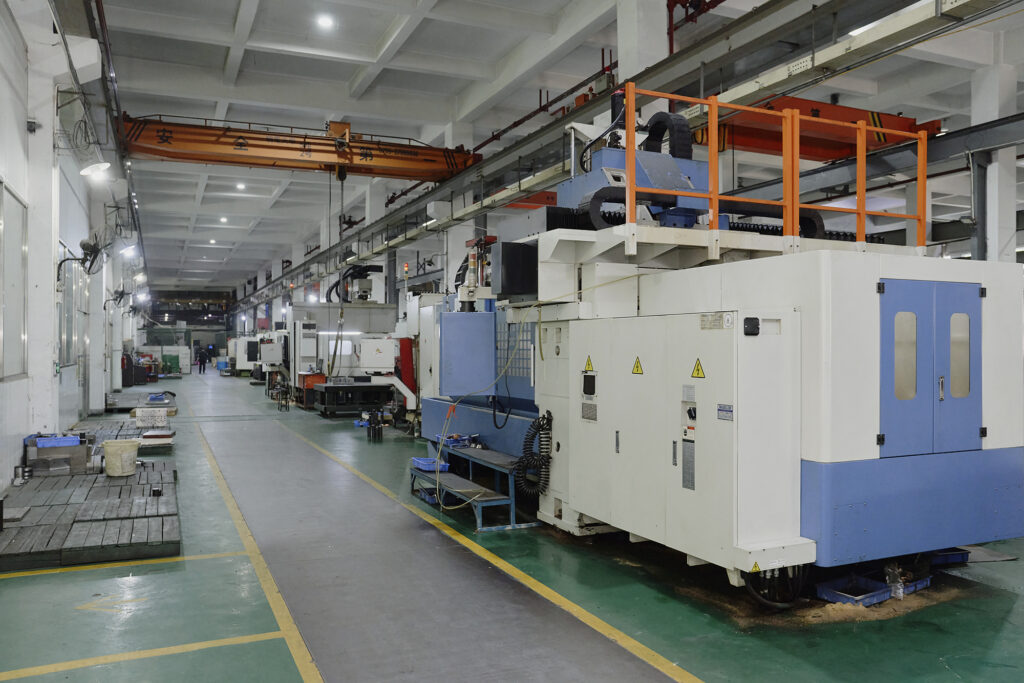Reaction Injeciton Molding Manufacturer
Premium Molding Solutions: Mastering Customized Reaction Injection Molding for Your Unique Industrial Needs
The Reaction Injection Molding Services Premium offers you
Discover the Precision of Premium’s Reaction Injection Molding: Specializing in Complex, High-Quality Parts for Diverse Industries. Our RIM expertise ensures detailed, durable, and lightweight solutions, uniquely crafted to your specifications. Connect with us to elevate your project with our advanced RIM capabilities

RIM for Polyurethane
Unlock the full potential of your designs with Premium’s Polyurethane RIM services. Ideal for a diverse array of applications, our polyurethane RIM ensures precision, durability, and versatility. Whether it’s intricate medical devices or robust automotive components, our polyurethane solutions cater to the most demanding specifications with ease and efficiency.

DCPD
Experience the strength and impact resistance like never before with our DCPD (Dicyclopentadiene) RIM services. Ideal for heavy-duty applications, DCPD provides exceptional toughness and large part molding capabilities. It’s the choice for products that demand high resilience, making it perfect for construction equipment, large vehicle panels, and more.
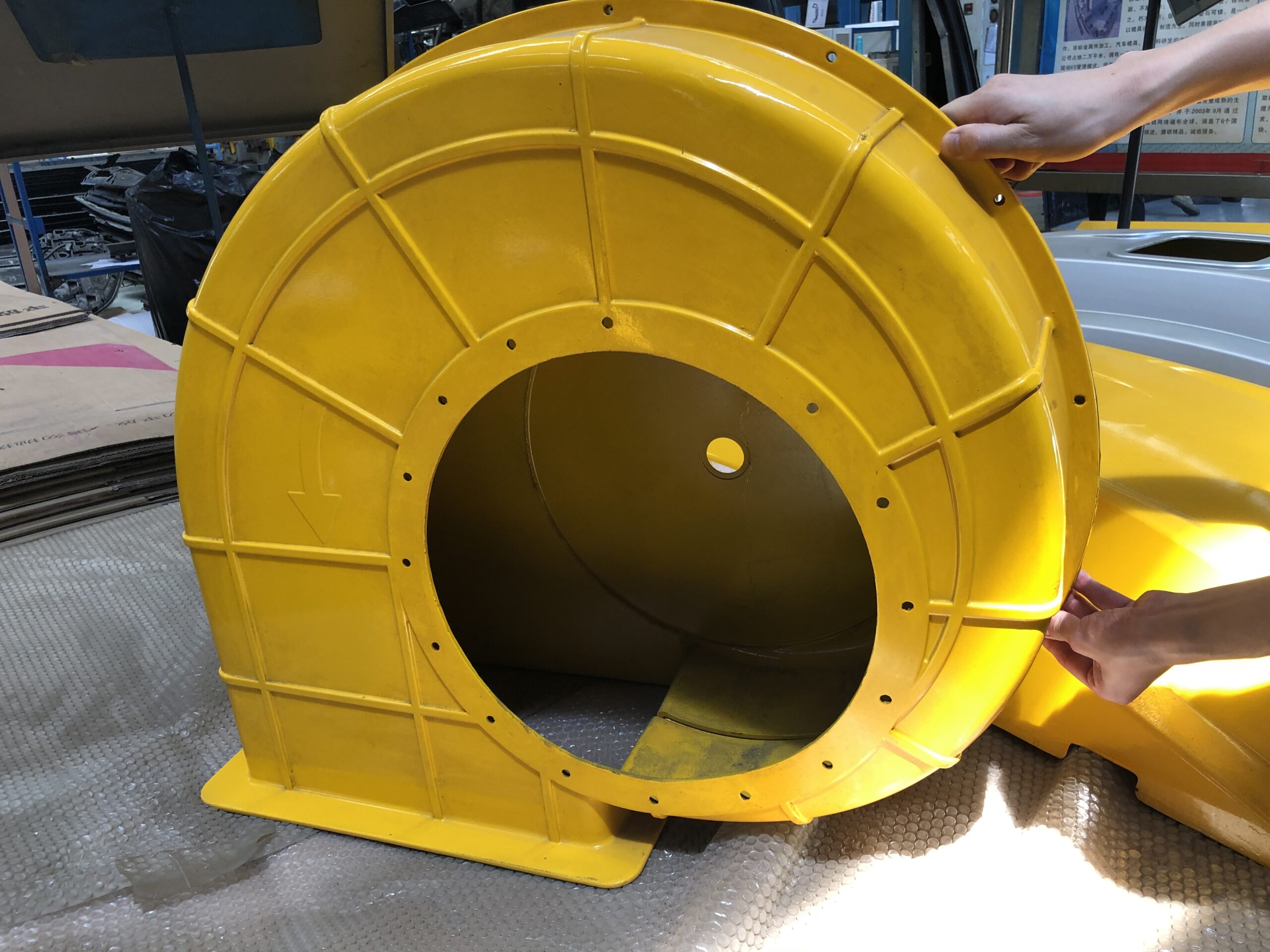
PDCPD
Elevate your projects with Premium’s PDCPD (Polydicyclopentadiene) RIM services. PDCPD takes the robust qualities of DCPD and adds enhanced surface aesthetics and weatherability, making it ideal for exterior automotive parts, high-end machinery covers, and components exposed to harsh environments. Expect a flawless finish coupled with unwavering strength.
Your Reaction Injection Molding Manufacturer & Supplier in China
Choose Premium for your RIM needs and witness a seamless transition from concept to reality. Our dedication to quality, combined with our technical prowess in Polyurethane, DCPD, and PDCPD RIM, ensures your project achieves excellence every step of the way

1.Customized Solutions: Tailor-made for complex, large-scale parts, our RIM process adapts to the precise dimensions and geometries of your project.
2.Material Versatility: Choose from a range of polyurethane options, offering varying degrees of rigidity and flexibility, to perfectly align with your application requirements.
3.Design Complexity Mastery: From intricate shapes to varying wall thicknesses, our RIM expertise ensures even the most complex designs are flawlessly executed.
4.Strength and Lightweight Balance: Achieve the perfect harmony of strength and reduced weight for your components, enhancing both performance and efficiency.
5.Surface Finish Options: Opt for diverse finishes,painting or coating to get matt,semi-gloss or high gloss surface, ensuring your parts not only function optimally but also meet aesthetic standards.
6.Integrated Functionality: Seamlessly incorporate inserts and hardware during the molding process for enhanced functionality and reduced assembly time.
Streamline Your RIM Projects with Premium
Embark on a seamless journey to precision-engineered RIM solutions with Premium. We’ve refined our approach to simplify and enhance your experience, providing expert support every step of the way. Here’s our tailored four-step process, ensuring your RIM components align perfectly with your project requirements:
-1024x683.jpg)
Analyzing Operational Conditions
Share the intricate details of your project. This includes information on the part’s intended use, environmental exposure (such as temperatures, chemicals, or physical stresses), size constraints, and expected lifespan. These details ensure we align the RIM process to your specific needs.

Specifying Application Requirements
Define the functional objectives of your RIM components. Whether they are for automotive parts, medical devices, heavy machinery, consumer products, or specialized equipment, our expertise spans across sectors. We adapt our RIM solutions to meet the demands of your unique application.

Material Selection and Design Complexity
Choose from our range of RIM materials, including Polyurethane, DCPD, and PDCPD, each offering distinct properties of flexibility, strength, and durability. We then dive into the design intricacies, tackling complex geometries, varying wall thicknesses, and integrated features that your project demands.
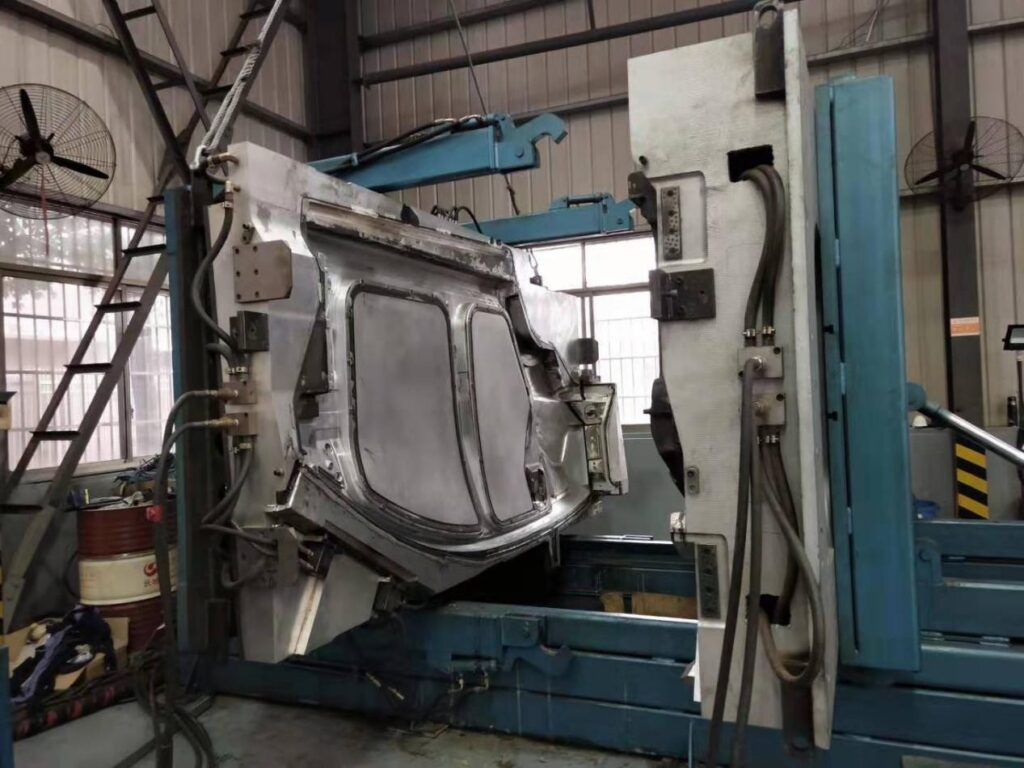
Customizing to Specifications
Provide us with your designs and specifications. Our team meticulously reviews the dimensions, shapes, and functional requirements. We ensure every aspect of the design is feasible within the RIM process, offering suggestions to enhance manufacturability, durability, and cost-effectiveness.
Why Choose Premium's Reaction Injection Molding (RIM) Services?
As leading manufacturer in Reaction Injection Molding, Premium is dedicated to engineering excellence, leveraging our extensive experience to deliver top-tier RIM solutions across diverse industries. Our reputation is built on a foundation of innovation, exceptional quality, and delivering results that consistently exceed expectations.
1.Customized, Client-Centric Solutions: At Premium, we prioritize understanding and meeting your specific needs. Each RIM project is tailored to your unique requirements, ensuring that the final product not only meets but surpasses your expectations in functionality and quality.
2.Competitive Pricing: We believe in providing high-quality RIM solutions at competitive prices. With Premium, you gain access to industry-leading RIM products without compromising your budget, making our services accessible to businesses of all sizes.
3.Versatile Applications: : Our experience spans multiple industries, from automotive to medical devices, showcasing our ability to adapt our RIM solutions to meet the specific needs of diverse sectors.
4.Long-term Reliability and Durability: Products manufactured through our RIM process are not only aesthetically pleasing but also built for durability and long-term use, ensuring a better return on investment for your projects.

FAQs About Reaction Injection Molding Services
We’ve compiled the most frequently asked questions about our Reaction injection molding services for your convenience. However, should you have any additional questions, please don’t hesitate to contact us.
RIM is a manufacturing process that involves injecting reactive liquid polymers into a heated mold where they chemically react, expand, and cure into a solid plastic part.
Commonly, two liquid components: polyol and isocyanate, which react to form polyurethane,the most common materials are polyurethanes, including varieties like polyurea and polyisocyanurate, but Dicyclopentadiene (DCPD) and Polydicyclopentadiene (PDCPD) are also used for specific applications.
RIM uses low-viscosity thermosetting polymers and operates at lower temperatures and pressures that react and cure in the mold, unlike traditional injection molding that uses high-viscosity thermoplastic materials.
RIM allows for large part production, complex geometries, varying wall thickness, with cost-effective tooling and material optionsexcellent surface finishes, and the integration of various functional elements into a single component.
It's used in automotive parts, medical devices, enclosures for electronic and telecommunication equipment .
RIM is economical for certain projects, particularly in low to medium production volumes. Its initial higher costs due to custom tooling are offset by lower material and tooling expenses, as cheaper aluminum molds are used instead of steel. RIM's efficiency in fabricating large, complex parts with minimal waste also enhances its cost-effectiveness, making it a viable option for specific needs.
In Reaction Injection Molding, key design considerations include varied wall thickness for flexibility, draft angles for easy mold release, material selection for specific properties, and integrating inserts or encapsulations. Consideration for surface finishes and post-processing is also crucial.
Premium's RIM service stands out with its advanced customization capabilities, particularly in handling complex geometries and large-scale parts. Our expertise in polyurethane, DCPD, and PDCPD surpasses industry norms, offering unparalleled precision, efficiency, and adaptability in every project
Yes, Premium is equipped to handle high-volume production while maintaining consistent quality and meeting tight deadlines,like hundreads and thousands pieces.
Reaction Injection Molding (RIM) excels in producing large parts, with capabilities extending up to 2000 mm by 1200 mm by 1000 mm. Its low-viscosity materials and adaptable aluminum tooling allow for intricate designs and significant sizes without compromising structural integrity or incurring high costs.
At Premium, our RIM service provides a wide array of color and surface finish options. Customers can select from various color codes and glossiness levels to match their specific design requirements, ensuring every RIM part delivered meets both functional and aesthetic standards.
Lead times vary, but we strive for quick turnarounds, typically ranging from a 7 weeks to a couple of months, depending on project complexity.
Premium specializes in seamlessly integrating various inserts and hardware into RIM parts, enhancing functionality and reducing assembly time. Our expertise includes embedding components like metal threads, electronic interfaces, and structural reinforcements, tailored to the unique specifications of each project.
Premium is adept at producing flame-retardant RIM parts, utilizing advanced polyurethane systems rated UL94-V0 for flammability. This capability ensures that parts meet stringent safety standards, making them ideal for critical applications in industries like electronics and medical devices.
Premium RIM: Precision, Quality, and Innovation
Explore the realm of Precision Reaction Injection Molding with Premium. Our expertise spans from advanced mold design to flawless finishes, ensuring every step is executed with excellence, tailored to meet the distinct needs of our clients.
Premium harnesses state-of-the-art Reaction Injection Molding technology to fabricate parts up to 2000x1200x1000 mm, ideal for complex, large-scale applications in diverse industries including automotive, medical, and consumer products. Our RIM process ensures optimal material usage, precise control, and reduced cycle times, while maintaining the highest quality in product design and functionality. This approach facilitates cost-effective production, particularly for low to medium-volume runs.
At Premium, our mold-making expertise is showcased through the use of high-grade aluminum and advanced CAD/CAM software. This process enables the creation of highly accurate and durable molds, tailored to the specific requirements of each project. The utilization of aluminum reduces both tooling costs and production lead times, allowing for rapid development and timely delivery of complex, high-quality RIM parts.
Premium’s RIM parts are available in a variety of surface finishes, including high-gloss, matte, and UV-resistant coatings, to meet diverse aesthetic and functional requirements. Our finishing techniques ensure that each part not only meets the desired visual appeal but also possesses enhanced durability to withstand harsh environments and extensive usage, making them suitable for a wide range of applications.
Our rigorous quality inspection process involves advanced techniques such as Coordinate Measuring Machines (CMM), ensuring dimensional accuracy within ±0.5 mm. We conduct extensive material and functional tests for every production batch, focusing on durability, stress resistance, and overall performance. This meticulous approach guarantees that each RIM product meets the highest standards of quality and reliability.
Premium’s packaging standards are meticulously designed to ensure the utmost safety and integrity of RIM parts during transit. We utilize shock-resistant materials and custom crating, tailored to the specific needs of each product. Our packaging solutions are robust and secure, suitable for both domestic and international shipping, guaranteeing that products arrive in perfect condition at their final destination.
Our RIM services are certified under the stringent guidelines of ISO 9001:2015, reflecting our unwavering commitment to maintaining the highest standards in quality, environmental management, and customer satisfaction. This certification underscores our dedication to continuous improvement, operational excellence, and delivering superior RIM solutions that meet the evolving needs of our diverse client base.
Your Complete Guide to Choosing Reaction Injection Molding Services
Explore the world of Premium’s Reaction Injection Molding Services. Tailored for both complex designs and high-volume production, our guide sheds light on the exceptional quality of our services. Our aim is to simplify and enhance your sourcing journey, providing both efficiency and valuable insights throughout your reaction injection molding venture
Table of Contents
Unveiling the Secrets of RIM Technology: How Does It Transform Modern Manufacturing?
Reaction Injection Molding (RIM) stands as a pivotal innovation in the realm of manufacturing, offering a distinct approach compared to traditional injection molding. At its core, RIM utilizes low-viscosity thermosetting polymers, primarily polyurethanes, which are known for their remarkable versatility. This process involves the high-pressure mixing of two liquid components – polyol and isocyanate – which then react, expand, and cure inside the mold to form rigid, flexible, or foamed polyurethane products.
What sets RIM apart is its capability to produce larger, more complex parts with unique geometries and varying wall thicknesses, ranging from 3 mm to over 25 mm. This flexibility in design is unattainable in conventional injection molding, which is constrained by the need for uniform wall thickness due to the high-pressure molding of thermoplastics. RIM, on the other hand, with its lower molding pressures (around 100 psi), allows for greater creativity in part design, encompassing

intricate shapes and sizes up to 2 meters in length, without compromising the structural integrity or incurring prohibitive costs.
Furthermore, RIM technology excels in producing parts with superior physical properties. The materials used in RIM possess high impact resistance and excellent dimensional stability, making them ideal for a wide range of industries, from automotive to medical devices. The surface finishes achievable in RIM, such as high gloss or textured finishes, cater to diverse aesthetic and functional requirements.
This advanced molding technique also stands out for its economic efficiency, especially in low to medium production runs. The cost-effectiveness is bolstered by the use of lower-cost aluminum molds, contrasting with the expensive steel molds required for high-pressure thermoplastic injection molding.
In summary, Reaction Injection Molding represents a significant leap forward in manufacturing, delivering unparalleled flexibility in design, material properties, and cost-efficiency. As industries continue to evolve, RIM remains a key player, shaping the future of manufacturing with its innovative approach and adaptable solutions.
Materials Used in RIM: Navigating the Choices for Optimal Product Performance
In the specialized world of Reaction Injection Molding (RIM), material selection is paramount to achieving desired product outcomes. Primarily, three materials dominate this sphere: polyurethanes, Dicyclopentadiene (DCPD), and Polydicyclopentadiene (PDCPD). Each of these materials brings its unique properties and benefits to the RIM process, catering to a broad spectrum of industrial applications.
1. Polyurethanes: The Versatile Powerhouse in RIM
Composition & Properties: Polyurethanes are synthesized by reacting a polyol with a diisocyanate or a polymeric isocyanate in the presence of suitable catalysts and additives. They offer a remarkable range of physical properties, isocyanate.

Strength & Flexibility: These materials can be engineered to achieve varying levels of hardness, ranging from soft and flexible to rigid and tough. The hardness can be tailored from 20A to 85D on the Shore scale, accommodating diverse applications.
Thermal & Chemical Resistance: Polyurethanes possess good resistance to oils, solvents, and various chemicals. They can also endure a wide temperature range, maintaining stability from -30°C to 90°C, sometimes even higher with special formulations.
Applications: Used in automotive components, electronic housings, medical devices, and more. They’re also ideal for parts that require intricate shapes and fine details due to their excellent flow characteristics.
2. Dicyclopentadiene (DCPD): The Industrial Stalwart
Chemical Profile: DCPD is a cyclic diolefin known for its robust and resilient nature. It’s used in RIM for producing high-impact and corrosion-resistant parts.
Heat Resistance & Durability: DCPD excels in environments requiring heat resistance and structural strength. It can withstand temperatures up to approximately 150°C.
Shrinkage & Molding: DCPD has a slightly higher shrinkage rate compared to polyurethanes, which must be accounted for in the mold design. However, its low viscosity allows for creating large and complex parts with ease.
Applications: Common in automotive body panels, agricultural equipment, and large industrial containers, where strength and durability are key.
3. Polydicyclopentadiene (PDCPD): The Heavy-Duty Performer
Enhanced Impact Resistance: PDCPD is a variant of DCPD that offers even greater impact resistance and toughness, making it suitable for heavy-duty applications.
Structural Integrity: Ideal for large parts that need to maintain structural integrity under significant physical stress. It has an excellent strength-to-weight ratio.
Environmental Resistance: Exhibits high resistance to environmental factors like UV rays, harsh chemicals, and extreme temperatures, retaining its properties over time.
Applications: Widely used in producing large panels for agricultural machinery, commercial vehicles, and construction equipment.
In summary, these three materials – polyurethanes, DCPD, and PDCPD – each bring unique qualities to RIM, making it a versatile manufacturing process suitable for a wide range of applications. The choice between them hinges on the specific requirements of strength, flexibility, environmental resistance, and the intricacy of the designs involved.
Cost-Effectiveness of RIM: A Strategic Financial Analysis

In the dynamic world of manufacturing, Reaction Injection Molding (RIM) stands out for its unique cost-efficiency, especially for specific project requirements. This method, ideal for producing large, complex parts, offers a cost-effective alternative in scenarios where traditional injection molding may prove prohibitively expensive.
Initial Investment and Production Scale: The upfront investment in RIM is often higher due to custom tooling needs. However, this is offset by lower production costs in the long run.
RIM utilizes low-cost aluminum molds instead of the more expensive steel molds required for high-pressure injection molding. This aspect becomes crucially advantageous for low to medium production runs.
Material Efficiency and Waste Reduction: RIM’s ability to handle a variety of materials like polyurethanes, DCPD, and PDCPD, combined with its precise molding capabilities, results in minimal material wastage. This efficiency translates to cost savings, especially when dealing with expensive materials.
Design Flexibility and Complexity: RIM allows for greater design flexibility and can produce parts with intricate geometries and variable wall thicknesses. This flexibility reduces the need for secondary processing, further cutting down costs.
Dimensional Tolerance and Quality: RIM parts exhibit excellent dimensional tolerance and quality. The process can achieve tolerances as tight as ±0.005 inches, ensuring high precision without additional costs.
Customizing for Durability and Flexibility: RIM specializes in creating highly durable and flexible parts, ideal for harsh environments and demanding applications. Its tailored approach in achieving specific flexural strengths makes it indispensable for specialized industries like aerospace and medical devices,outdoor equipment or industrial components, where precise material properties are critical for compliance with strict industry standards.
Low Volume, High Value: For low to medium volume productions, RIM’s initial tooling costs are offset by its ability to produce large, complex parts without the need for expensive, high-pressure machinery. It’s a game-changer for bespoke projects or limited-run productions where precision and customization are critical, offering a favorable cost-benefit ratio.
Speed to Market: In industries where time-to-market is a key factor, RIM’s faster tooling and setup times can mean significant cost savings. This rapid deployment capability can be a crucial financial benefit in scenarios like product prototyping or market testing phases.
Long-Term Durability Reduces TCO: The robustness of RIM products often means less frequent replacements or repairs. This durability translates into a lower Total Cost of Ownership (TCO) over the product’s lifespan, making RIM a smart investment in the long run, especially for components subjected to harsh environments or heavy usage.
Seamless Integration and Efficiency: RIM technology melds complex elements, including metal inserts and variable wall thicknesses, directly within the mold. This innovation significantly reduces post-production tasks like drilling or welding, thereby streamlining the entire production process. It results in labor and time savings, expediting the journey from design concept to final product, crucial for fast-paced markets. complex geometries, or producing parts with varying wall thicknesses. Such integrations are seamlessly achieved within the mold, eliminating the need for additional assembly steps.
In essence, while RIM may initially appear cost-intensive, its comprehensive analysis reveals a financially advantageous narrative, particularly in projects that demand customization, precision, and durability. Its ability to offer long-term savings across various stages of production and product lifecycle makes RIM a strategically astute choice in specialized manufacturing domains.
Harnessing the Power of Customization in Reaction Injection Molding
Reaction Injection Molding (RIM) stands as a beacon of customization in the manufacturing world, offering unparalleled flexibility in design and material selection. This process, utilizing low-viscosity polymers like polyurethanes, DCPD, and PDCPD, opens doors to endless possibilities in product design and development.
At the core of RIM’s strength is its adaptability to intricate designs. Unlike traditional injection molding, RIM can effortlessly handle parts with varying wall thicknesses, intricate geometries, and complex shapes. This flexibility is paramount, particularly when producing large-scale components such as automotive parts or medical devices. RIM’s ability to mold large parts, up to several feet in dimensions, without sacrificing detail or structural integrity, sets it apart.
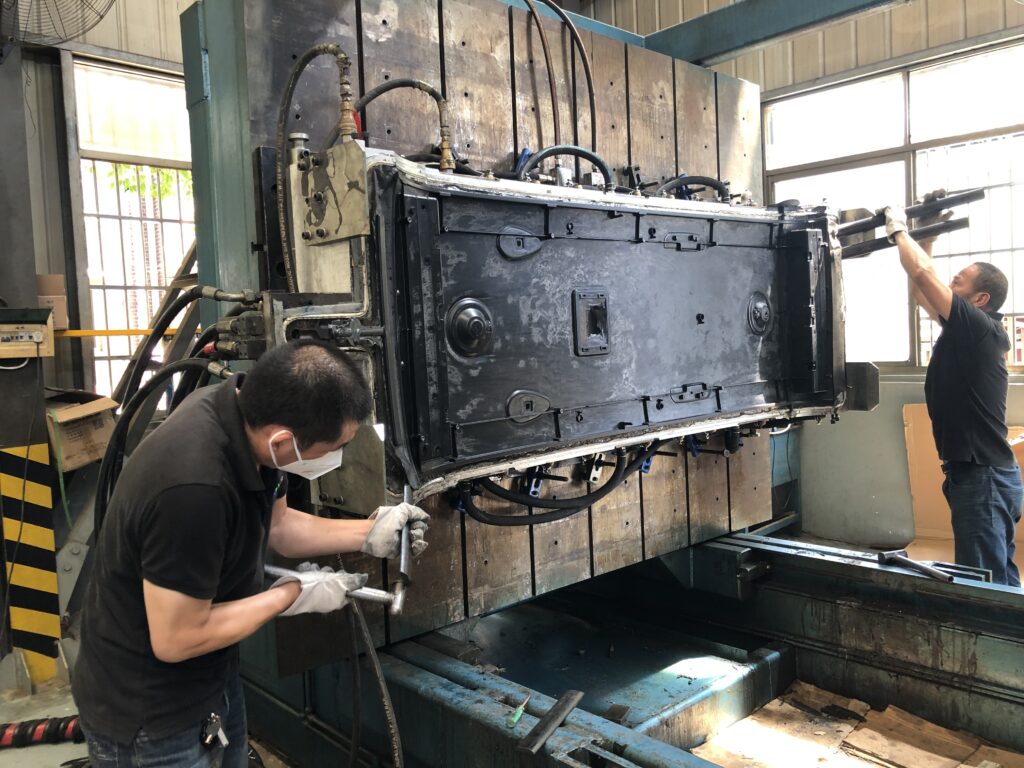
Material versatility is another cornerstone of RIM’s customization prowess. The range of materials used in RIM, especially polyurethanes, offers varied properties – from rigidity to flexibility, enhanced durability to shock absorption. This material versatility means products can be tailored to specific applications, whether it’s a component requiring high impact resistance or one needing a delicate touch.
Moreover, RIM allows for the integration of various inserts and reinforcements during the molding process. This ability to embed metal parts, electronics, or other materials directly into the molded part not only enhances functionality but also streamlines the manufacturing process by reducing the need for secondary operations.
Surface finishes in RIM also contribute to its customizability. With options ranging from high gloss to textured finishes, RIM parts can achieve the desired aesthetic appeal while maintaining functionality. This aspect is crucial in consumer-facing products where appearance is as important as performance.
In terms of tolerances, RIM holds its own with precision, often achieving tolerances within ±0.013 mm. This precision ensures that even the most exacting specifications are met, making RIM an ideal choice for industries where detail and accuracy are non-negotiable.
Material Diversity and Composite Creation: RIM is distinguished by its compatibility with a broad spectrum of materials, beyond standard options like polyurethanes, DCPD, and PDCPD. This versatility allows for the creation of composite materials that combine the best properties of different substances. For instance, integrating soft and hard segments within a single part or creating gradient materials that gradually change properties across the part.
Environmental Adaptability: RIM materials can be engineered for specific environmental resilience, like UV resistance, waterproofing, or corrosion resistance. This makes RIM ideal for outdoor or harsh industrial applications where durability and longevity are paramount.
Biocompatibility and Medical Applications: For medical devices, RIM can be used with biocompatible materials, allowing for the creation of ergonomic, patient-friendly devices.
Aesthetic Customization and Branding: RIM’s adaptability extends to visual customization. Parts can be molded in specific colors, eliminating the need for post-process painting. Textures, logos, or brand-specific designs can be directly integrated into the mold design, enhancing brand presence and product appeal.
Lightweighting without Compromise: RIM allows for the creation of lightweight parts without sacrificing strength or durability, crucial for industries like aerospace and transportation, where weight reduction is directly linked to efficiency and performance.
In conclusion, RIM’s true potential lies in its capacity to meld diverse material properties, complex design elements, and functional requirements into a single, streamlined manufacturing process. This holistic approach opens up new possibilities for tailored solutions, pushing the boundaries of what can be achieved in product design and manufacturing.
Revolutionizing Medical Device Manufacturing with Reaction Injection Molding
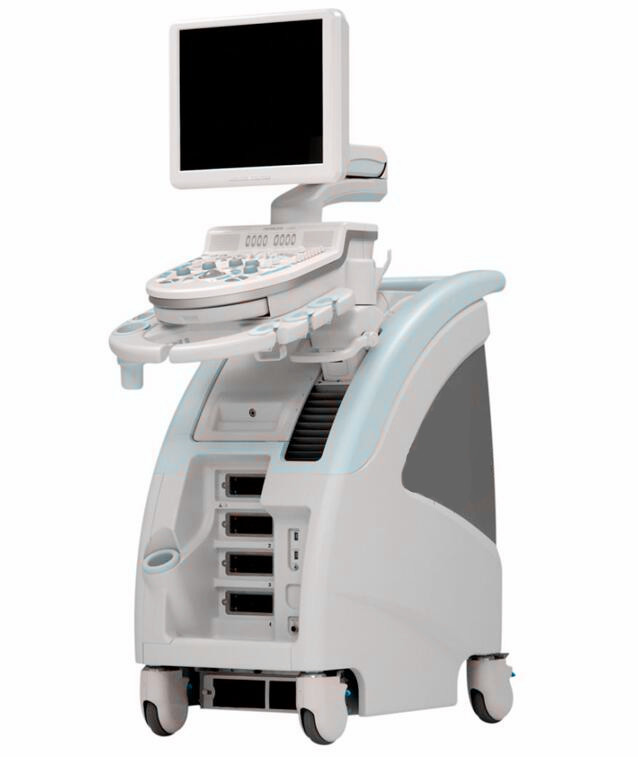
In the rapidly evolving world of medical technology, Reaction Injection Molding (RIM) stands out as a transformative manufacturing process, particularly for the production of specialized medical devices. RIM’s unique capability to mold complex shapes and incorporate a variety of materials makes it an indispensable tool in the medical industry.
1.Precise Tolerances for Critical Components: Reaction Injection Molding (RIM) shines in medical manufacturing by producing large, intricate parts with exceptional precision, often achieving tolerances as tight as ±0.13mm. This accuracy is vital for medical devices where exact dimensions are critical for functionality.
2.Material Versatility for Diverse Applications: RIM’s strength lies in its flexibility with
materials, especially polyurethane. This material’s range from rigid to elastomeric qualities suits various medical needs. It can be tailored for biocompatibility, making it safe for medical use, and is ideal for creating ergonomic handles, shock-resistant casings, and lightweight parts for mobile medical equipment.
3.Integrated Functionality: RIM supports the integration of electronic components and metal inserts directly into the plastic part. This feature is especially beneficial in medical devices like portable diagnostic machines, simplifying assembly and cutting production costs.
4.Aesthetic Customization: The process offers aesthetic versatility, allowing for a variety of textures and colors. This capability is crucial for creating patient-friendly designs in medical equipment, enhancing both functionality and visual appeal.
5.Enhanced Sterilization Compatibility: In the medical field, the ability to sterilize equipment is paramount. RIM materials like certain grades of polyurethanes are highly resistant to sterilization processes, including autoclaving and chemical sterilants. This resistance ensures the longevity and hygiene of medical devices, a crucial factor in medical environments.
6. Lightweight and Durable Solutions: Medical devices often need to be both lightweight for ease of handling and durable to withstand regular use. RIM offers an optimal balance, creating components that are easy to maneuver yet robust enough to endure the rigors of daily medical operations.
7. Customized Mechanical Properties: Medical devices can have diverse mechanical requirements, such as shock absorption for handheld instruments or rigidity for structural components of diagnostic machines. RIM allows for the customization of mechanical properties within the same part, providing tailored solutions for complex medical applications.
8.Rapid Prototyping and Customization: The medical field often demands rapid development and customization of devices to meet specific patient or clinical needs. RIM supports rapid prototyping, enabling manufacturers to quickly produce and test custom parts, accelerating the innovation cycle in medical technology.
9.Cost-Effective Tooling for Specialized Devices: For medical devices that require unique shapes or sizes, especially for low-volume production, RIM offers cost-effective tooling solutions. This aspect is crucial for producing specialized or niche medical equipment where the demand might not justify the high costs of traditional tooling.
In conclusion, RIM’s role in medical device manufacturing is multifaceted. Its capabilities extend far beyond shaping and material choice, providing a comprehensive solution that addresses the nuanced and critical needs of medical device production. This process not only ensures the delivery of high-quality medical devices but also supports the rapid advancement and diversification of medical technologies.
9 Key Strategies for Maximizing Design Flexibility in Reaction Injection Molding
Reaction Injection Molding (RIM) marks a significant advancement in manufacturing, particularly renowned for its exceptional design flexibility. This process revolutionizes the creation of complex and intricate part designs, making it a preferred choice in various industries for its ability to craft detailed and unique components.
1.Complex Geometries and Fine Details: RIM’s capability to mold sophisticated and detailed designs is one of its standout features. The process can handle intricate textures, precise contours, and varying geometries with ease. Designers can create elaborate shapes and features that traditional methods would find difficult to replicate.
2.Variable Wall Thickness: One of RIM’s most notable advantages is its ability to
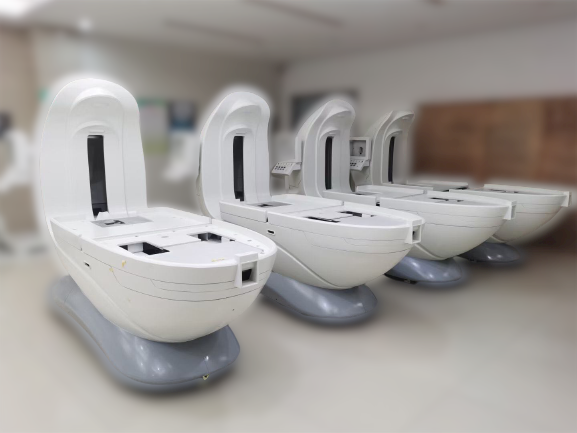
produce parts with variable wall thicknesses within the same component. This flexibility is vital in creating parts that require strong, thick sections for structural support alongside thinner areas for reduced material use and weight savings.
3.Intricate Undercuts and Negative Drafts: RIM excels at molding parts with undercuts and negative drafts, which are often problematic in traditional injection molding. This ability opens up new design possibilities, allowing for the creation of parts that would otherwise require complex, multi-piece assemblies.
4.Large Part Manufacturing: RIM is particularly effective in producing large parts with intricate designs. The process overcomes the limitations often encountered in traditional manufacturing methods, where the size of the part can restrict the complexity of the design.
5.Integrated Functionality: RIM allows for the integration of multiple functions within a single part. Features such as channels for wiring, slots for inserts, or areas for mechanical interlocks can be included directly in the mold design. This integration streamlines assembly processes and adds functionality without complicating the part design.
6.Design for Disassembly: RIM can be tailored for products intended to be disassembled for repair or recycling. The process allows for creating snap-fit joints, interlocking parts, or modular designs, facilitating easier disassembly and reassembly, thereby extending the product’s lifecycle.
7.Design Consistency in Large Parts: For large components, RIM maintains design consistency and dimensional stability, crucial for applications like automotive panels or large medical devices. This consistency is often challenging to achieve in large parts with traditional injection molding.
8.Reduced Stress Concentrations: The RIM process enables the design of parts with smooth transitions between different sections, reducing stress concentrations. This aspect is vital for parts that undergo mechanical stress or vibration, ensuring longevity and durability.
9.Undercut and Complex Shape Molding: RIM is adept at molding parts with undercuts or complex internal geometries, which would be difficult or impossible to achieve with traditional molding techniques. This capability expands the design possibilities, especially for intricate components in specialized machinery or equipment.
By offering such extensive design flexibility, RIM empowers manufacturers and designers to push the boundaries of innovation and creativity. This process not only meets the current demands for complex part designs but also paves the way for future advancements in various fields of manufacturing.
What Makes RIM Components Exceptionally Strong and Durable?

In the dynamic world of manufacturing, Reaction Injection Molding (RIM) stands out for its unique ability to produce components with impressive strength and lasting durability. A key distinguishing factor of RIM lies in its use of polyurethane – a versatile material known for its exceptional mechanical properties. RIM components exhibit high tensile strength, often ranging from 6,000 to 10,000 psi, making them suitable for applications demanding robustness and resilience.
The durability of RIM products is a testament to polyurethane’s innate toughness. This material can withstand significant wear and tear, retaining its structural integrity over time. It’s not uncommon for RIM parts to exhibit elongation at break values of 100-300%, indicating their ability to endure stretching and bending without failure This elasticity, combined with inherent impact resistance, ensures that RIM components can sustain shocks and stresses without compromising their form or function.
RIM’s adaptability extends to custom formulations. Polyurethanes can be engineered to specific hardness levels, measured on the Shore scale, ranging from soft elastomers to rigid plastics. This flexibility allows for tailored solutions to meet diverse application needs – from cushioned surfaces requiring a softer touch to sturdy structural parts demanding rigidity.
Beyond mechanical prowess, RIM also offers dimensional stability. RIM parts maintain their shape and dimensions even under fluctuating temperatures and environmental conditions. This stability is crucial in industries where precision and reliability are non-negotiable.
The endurance of RIM products extends to their ability to withstand environmental stressors. UV resistance is a notable feature of many RIM materials, ensuring that components don’t degrade or lose integrity when exposed to sunlight over extended periods. This aspect is particularly valuable for outdoor applications, where UV exposure is inevitable.
Furthermore, the thermal stability of RIM products is exceptional. They maintain their mechanical properties over a wide temperature range, making them suitable for applications that experience temperature fluctuations. This stability is a testament to the material’s adaptability, ensuring reliable performance whether in the heat of an engine compartment or the cold of an outdoor setting.
Lastly, the impact resistance of RIM products is a critical aspect of their durability. They absorb and dissipate energy upon impact, making them less likely to crack or shatter. This property is especially beneficial in automotive and industrial applications, where components must endure regular impacts.
In summary, RIM’s strength and durability are not just about enduring the test of time; they are about offering reliable, adaptable, and high-quality solutions for an array of industrial applications. With its blend of strength, durability, and versatility, RIM technology continues to be a preferred choice for manufacturers who demand nothing short of excellence.
Navigating the Complexities of RIM: Effective Solutions for Common Challenges
In the world of manufacturing, Reaction Injection Molding (RIM) stands out for its unique ability to create large, complex, and lightweight parts. However, like any specialized process, RIM comes with its own set of challenges, which, when navigated skillfully, can lead to innovative and efficient solutions.
Managing the material properties.: RIM utilizes low-viscosity liquid polymers like polyurethane, which can be tricky to handle due to their sensitivity to environmental conditions. Temperature and humidity fluctuations can affect the material’s behavior, impacting the final product’s quality. Advanced control systems are employed to maintain consistent environmental conditions, ensuring material stability and repeatability in production.
Another hurdle is the design complexity: RIM allows for a high degree of design flexibility, but this also requires precise tooling and mold design. Ensuring dimensional accuracy and
-1024x683.jpg)
achieving desired surface finishes can be challenging, especially for intricate parts. Utilizing computer-aided design (CAD) and simulation software, engineers can optimize mold designs and predict potential issues before production, enhancing accuracy and reducing the need for costly rework.
Tooling cost and maintenance also pose significant challenges. RIM uses lower-cost aluminum tools, but these can wear out faster than steel molds used in high-pressure injection molding. Adopting innovative tool design strategies and regular maintenance schedules can prolong mold life and reduce overall tooling expenses.
Furthermore, RIM’s slower cycle times, compared to traditional injection molding, can impact production efficiency. To counter this, manufacturers streamline the process by integrating automated systems and optimizing production workflows, thus balancing the cycle time with the benefits of producing large, complex parts.
Surface Finish Quality: Achieving high-quality surface finishes in RIM can be challenging due to the nature of the materials used. Polyurethanes, while versatile, may not always yield the smoothest surfaces directly from the mold. To address this, manufacturers often employ post-molding finishing techniques such as sanding, painting, or coating, which enhance the aesthetic and functional qualities of the final product. Advanced mold design and surface treatment of the molds can also improve the initial finish quality.
Color Consistency: Maintaining color consistency in RIM parts can be difficult, especially when producing large volumes or large parts. Variations in the mixing process or in the chemical components can lead to color disparities. To mitigate this, precise color matching techniques and rigorous quality control measures are implemented. This includes using consistent material batches and closely monitoring the mixing and curing processes.
Integrating Inserts and Electronics: Incorporating inserts or electronics directly into RIM parts offers numerous advantages but also presents challenges. Ensuring that these components do not interfere with the molding process or get damaged by the chemicals is critical. The solution lies in careful design and planning, where the position and compatibility of inserts are meticulously considered. The use of specialized low-temperature-cure polyurethanes also helps in safely embedding sensitive components.
Environmental Factors: The RIM process, particularly when using certain polyurethanes, can raise environmental concerns due to the chemicals involved. Addressing these concerns involves adopting eco-friendly practices, minimizing waste, and implementing cleaner production methods. Research into more sustainable raw materials for RIM is ongoing, paving the way for greener manufacturing processes.
Adapting to Small Production Runs: While RIM is excellent for low to medium volume production, optimizing it for smaller production runs can be challenging due to setup and tooling costs. To make RIM viable for such scenarios, manufacturers are exploring modular mold systems and rapid tooling techniques that reduce setup times and costs, making small batch production more feasible and cost-effective.
In conclusion, while RIM presents unique challenges, the industry continually evolves with technological advancements and innovative problem-solving approaches. These solutions not only address the difficulties but also exploit RIM’s full potential, making it a versatile and valuable process in the manufacturing landscape.
Polydicyclopentadiene (PDCPD) in Automotive Manufacturing: Revolutionizing Component Fabrication
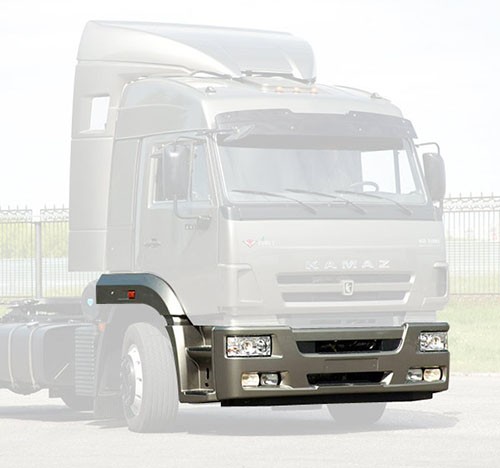
In the realm of automotive manufacturing, the integration of Polydicyclopentadiene (PDCPD) through Reaction Injection Molding (RIM) is a game-changer. PDCPD’s superior impact strength and dimensional stability make it the material of choice for crafting critical vehicle components like body panels and fenders. This thermoset polymer, characterized by its high resilience, is adept at withstanding severe impacts and harsh environmental conditions, a prerequisite for automotive exteriors.
The automotive industry, continually pushing the frontiers of innovation, demands materials that not only enhance performance but also contribute to overall vehicle efficiency. PDCPD’s lightweight nature plays a pivotal role in this, significantly reducing vehicle weight, thus contributing to improved fuel efficiency and reduced carbon emissions. This aligns perfectly with the industry’s shift towards sustainability and eco-conscious manufacturing practices.
PDCPD’s molding process via RIM allows for the creation of large, complex parts with intricate geometries, a featchallenging to achieve with traditional materials. This flexibility in design opens up new avenues for automotive engineers and designers,enabling the creation of sleek, aerodynamic components that meet both aesthetic and functional requirements.
Furthermore, the material’s chemical resistance makes it ideal for use in electric vehicles (EVs), which are gaining prominence in the automotive market. PDCPD’s ability to withstand the chemical stresses associated with electric powertrains ensures longevity and safety in EVs, addressing some of the key concerns in this rapidly growing sector.
The strategic use of PDCPD in automotive manufacturing also signifies a shift towards more sustainable material sourcing. As the industry grapples with the environmental impacts of traditional materials like metals and fiberglass, PDCPD offers a more eco-friendly alternative. Its production process, typically resulting in less waste and lower emissions, aligns with the global push towards greener manufacturing practices. This aspect of PDCPD is particularly appealing to manufacturers looking to boost their environmental credentials and appeal to a more eco-conscious consumer base.
Additionally, the role of PDCPD in enhancing vehicle safety cannot be overstated. Its inherent toughness and impact resistance contribute significantly to the structural integrity of vehicles. In an industry where safety standards are constantly being elevated, PDCPD helps manufacturers meet these stringent requirements without compromising on design or efficiency.
The future of PDCPD in automotive manufacturing also hinges on its adaptability to emerging technologies such as autonomous driving. The material’s properties can be optimized to accommodate sensors and other components essential for self-driving vehicles, thereby playing a pivotal role in this revolutionary shift within the automotive sector.
In conclusion, PDCPD’s role in automotive manufacturing transcends mere functionality. It embodies a holistic approach to vehicle design and production, one that prioritizes innovation, sustainability, and safety. As the automotive industry continues to evolve, PDCPD is poised to be at the forefront of this transformation, driving forward the next generation of automotive excellence.
PDCPD: Transforming Heavy Equipment and Machinery Manufacturing
In the realm of heavy equipment and machinery, Polydicyclopentadiene (PDCPD) stands as a revolutionary material, brought to the forefront by advancements in Reaction Injection Molding (RIM) technology. In industries where resilience and durability are paramount, PDCPD emerges as an ideal choice for manufacturing components of construction equipment, agricultural machinery, and other heavy-duty vehicles.
The construction and agriculture sectors demand materials that can withstand extreme conditions – from heavy impacts to harsh environmental exposures. PDCPD, with its outstanding impact resistance and high tensile strength, meets these rigorous demands. Its resistance to corrosion and chemical degradation further enhances its suitability for outdoor and rugged applications, where traditional materials often fall short.
Agricultural implements and construction machinery components, such as tractor hoods, loader buckets, and housing for heavy-duty machinery, benefit significantly from PDCPD’s lightweight yet robust nature. This unique combination reduces the overall weight of the machinery, contributing to enhanced fuel efficiency and ease of

handling, a critical factor in the operational efficacy of heavy equipment.
Moreover, the versatility of PDCPD allows for intricate designs and complex shapes, a capability well-exploited in RIM manufacturing. This flexibility in design, paired with the material’s inherent strength, opens up new possibilities for innovative machinery components that can endure the rigors of heavy-duty operations.
In addition, PDCPD’s ability to absorb sound and vibrations is a notable advantage, particularly in heavy machinery where noise reduction is a significant consideration. This characteristic not only improves the operational comfort but also aligns with the increasing regulatory focus on workplace safety and noise pollution.
The sustainability aspect of PDCPD in heavy equipment and machinery manufacturing is a critical component of its rising popularity. In an era where environmental impact is a significant concern, PDCPD offers an eco-friendlier alternative to traditional materials. Its production process, which typically involves lower emissions and less waste compared to metals and fiberglass, aligns with the global industry’s shift towards greener manufacturing practices. This aspect is increasingly important for companies aiming to enhance their environmental credentials and meet the growing demands of eco-conscious consumers and stakeholders.
In terms of production efficiency, PDCPD stands out for its faster curing times compared to other materials used in heavy equipment manufacturing. This attribute translates to shorter production cycles and quicker turnaround times, enabling manufacturers to respond more rapidly to market demands and custom requirements. The reduced production time, coupled with PDCPD’s ease of molding into complex shapes, allows manufacturers to reduce costs while maintaining high standards of quality and durability.
Looking ahead, the potential for PDCPD in heavy equipment and machinery is vast. Its compatibility with emerging technologies, such as automation and digital manufacturing, positions it as a material well-suited for future advancements in the industry. Innovations in composite materials and the exploration of adding reinforcements to PDCPD could further enhance its properties, opening up new applications in sectors where extreme durability and resistance to wear are essential.
In conclusion, PDCPD is not just transforming the present landscape of heavy equipment and machinery manufacturing; it’s setting the stage for future innovations. Its unique combination of strength, durability, design flexibility, and environmental benefits makes it a material that is not only meeting the current demands of the industry but also paving the way for the next generation of heavy machinery.
Unveiling the Material Excellence of Polydicyclopentadiene (PDCPD): A Comprehensive Insight
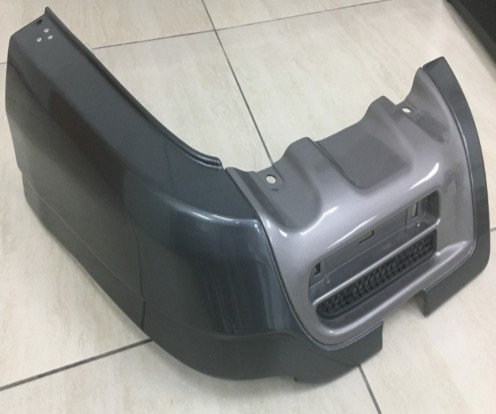
In the landscape of Reaction Injection Molding (RIM), Polydicyclopentadiene (PDCPD) has emerged as a material of choice, revered for its superior properties that cater to a wide range of industrial applications. As a senior expert in the RIM industry, I’ve witnessed PDCPD’s rise as a cornerstone material, and here, I aim to dissect its key properties that make it an indispensable asset.
Impact Resistance: PDCPD’s hallmark is its exceptional impact resistance. This property is critical in applications where components are subject to severe impact forces, such as in automotive bumpers and agricultural machinery. This resilience stems from PDCPD’s highly cross-linked polymer structure, providing a robustness that surpasses many conventional materials.
Chemical and Corrosion Resistance: Another vital attribute of PDCPD is its excellent resistance to chemicals and corrosion. This makes it ideal for use in harsh environments, where exposure to chemicals or corrosive substances is a norm. From industrial containers to parts exposed to outdoor elements, PDCPD ensures longevity and reliability.
Dimensional Stability and Tolerance: In precision-demanding applications, PDCPD stands out with its remarkable dimensional stability. The material undergoes minimal shrinkage during the molding process, maintaining tight tolerances and accurate dimensions. This precision is crucial in industries like aerospace and automotive, where every millimeter counts.
Heat Resistance: PDCPD’s thermal properties are noteworthy. It maintains structural integrity under varying temperatures, a key requirement for components in engines and other high-heat environments. This heat resistance is bolstered by PDCPD’s high heat deflection temperature, enabling it to withstand temperatures that would deform or degrade less capable materials.
Lightweight Nature: Despite its strength and durability, PDCPD is surprisingly lightweight. This characteristic is a boon in sectors like automotive manufacturing, where reducing the overall weight of vehicles contributes to fuel efficiency and performance.
Surface Finish and Aesthetics: PDCPD allows for a high-quality surface finish. The material can be molded into complex shapes with smooth surfaces, ready for painting or coating. This feature is particularly appealing in consumer-facing products where aesthetics play a significant role.
Economic Efficiency: From a production standpoint, PDCPD is cost-effective. Its processing through RIM is efficient, allowing for the quick and economical production of large parts. The material’s longevity and reduced need for maintenance also translate to long-term cost savings.
In summary, PDCPD’s amalgamation of impact and chemical resistance, dimensional stability, heat tolerance, and lightweight nature, coupled with its aesthetic appeal and economic efficiency, positions it as a material that’s not just meeting the demands of today’s industries but is also shaping the future of material science. As we continue to explore its potentials, PDCPD is undoubtedly poised to play a pivotal role in advancing various industrial sectors.
Transforming Industries with PDCPD: A Deep Dive into RIM Technology
The Reaction Injection Molding (RIM) process for Polydicyclopentadiene (PDCPD) is a specialized and sophisticated method, crucial for creating high-performance and durable components. This process involves several key steps:
Preparation of Reactants : The initial phase in PDCPD RIM involves preparing the primary reactant, dicyclopentadiene (DCPD). Obtained as a by-product during naphtha steam cracking, DCPD undergoes purification to ensure optimal quality. This stage is crucial as the purity of DCPD significantly influences the final polymer’s properties, impacting its strength and stability.
Mixing and Injection : In this critical phase, DCPD is mixed with a catalyst under controlled conditions. The mixture is then injected into a heated mold at high pressure. Precision in this step is paramount; the ratio of DCPD to catalyst, injection pressure, and temperature must be meticulously managed to ensure consistent polymerization and part quality.

3.Polymerization: Once injected, DCPD undergoes ring-opening metathesis polymerization (ROMP) inside the mold. This catalyst-driven reaction transforms the monomer into PDCPD, a cross-linked polymer. ROMP is favored for its efficiency, occurring at lower temperatures and enabling complex molecular architectures, which are pivotal in achieving PDCPD’s desirable material properties.
4.Curing: Post-polymerization, the PDCPD cures inside the mold, adopting its shape. Curing time is crucial for achieving the desired material characteristics. This phase solidifies the polymer’s structure, ensuring the final product has the requisite mechanical strength and thermal stability. Efficient curing is key to maintaining production throughput and part uniformity.
5.Demolding: After curing, the solidified PDCPD part is removed from the mold. This step requires precision to avoid damaging the part. The inherent robustness of PDCPD comes into play here, as the material’s strength facilitates easier demolding without compromising the integrity of the molded part.
6.Post-processing: The final stage involves various post-processing techniques, such as machining, painting, or coating, to enhance the part’s functional and aesthetic qualities. This phase can be customized based on application-specific requirements, allowing for versatility in the final product’s use. Quality control during post-processing ensures that the parts meet stringent industry standards.
7.Quality Control and Inspection: Post-demolding, each PDCPD component undergoes rigorous quality control. This step involves inspecting dimensions, surface finish, and mechanical properties to ensure compliance with specified standards. Advanced techniques like 3D scanning or coordinate measuring machines (CMM) are employed, ensuring each part meets the exacting requirements of the industry.
8.Secondary Finishing Operations: Secondary finishing processes, such as CNC machining, drilling, or surface treatments (like painting or coating), are applied to meet specific functional or aesthetic requirements. This stage customizes components for their intended application, ensuring not just fit and function but also enhancing durability and appearance
9.Packaging and Shipping : The final step involves carefully packaging the finished PDCPD parts to prevent damage during transportation. The packaging process is tailored based on the component’s size, shape, and vulnerability to ensure safe delivery. Efficient logistics are crucial, emphasizing the importance of this step in maintaining product integrity until it reaches the customer.
This RIM process for PDCPD is particularly valued for its ability to produce large, complex parts with excellent physical properties, such as high impact resistance, good chemical resistance, and dimensional stability. It’s extensively used in the automotive industry for parts like body panels and bumpers, and in other industries where durable, high-quality components are required.
Contact Us
Get Started With Premium Rapid & Mold Now!
We always want to make sure that our customers are getting the best deal, so let us know what you’re interested in and we’ll get back with a quote!
